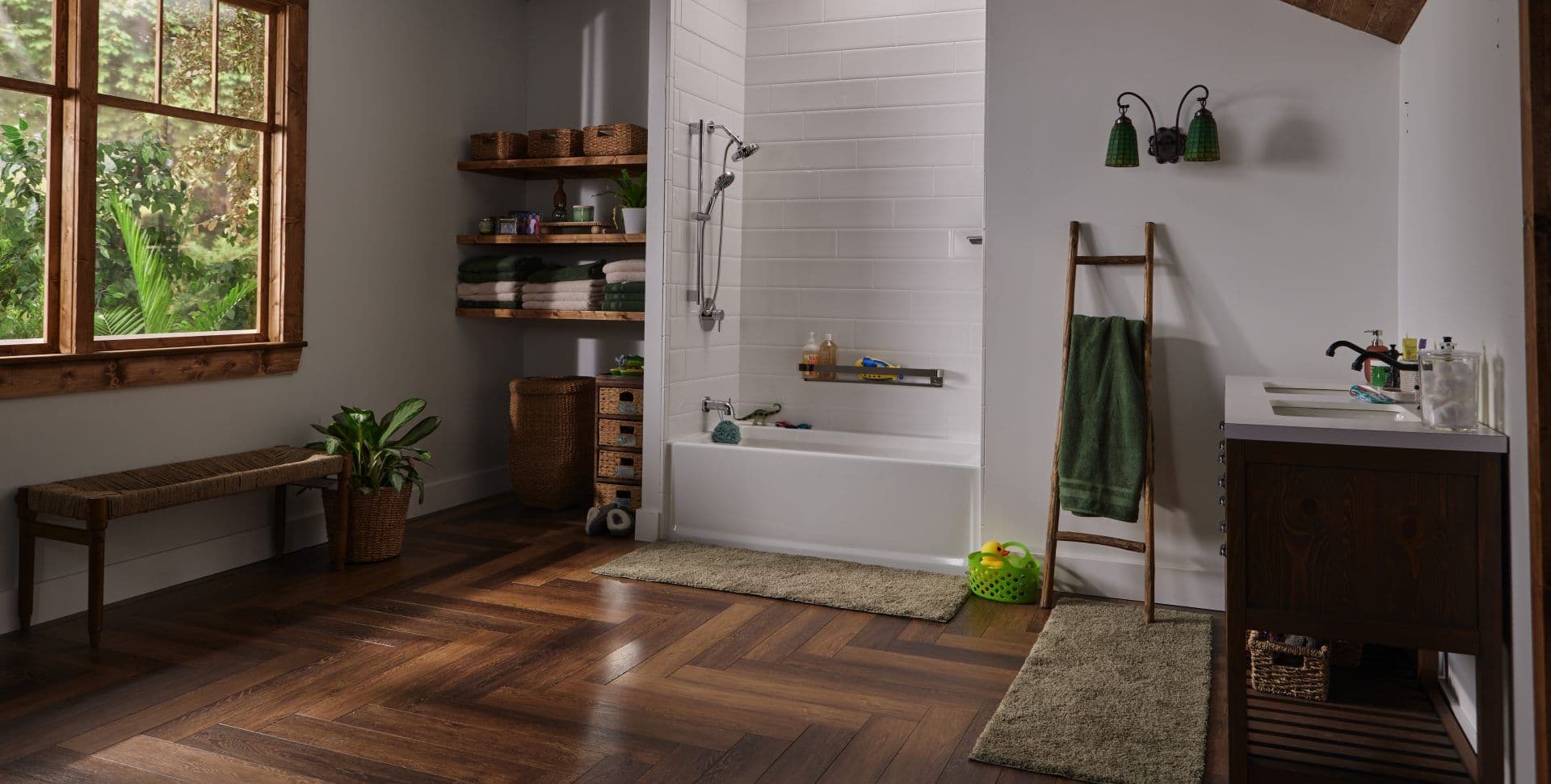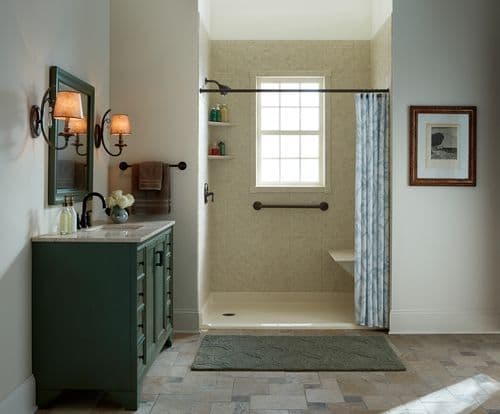The Ultimate Guide to Acrylic Tile in Showers
When it comes to bathroom renovations, the choice of materials can make or break the project. Acrylic tile showers have gained popularity in recent years due to their numerous advantages, but they also come with some drawbacks. In this guide, we’ll explore the benefits, negatives, durability, the cost of using acrylic tile in showers, and more.
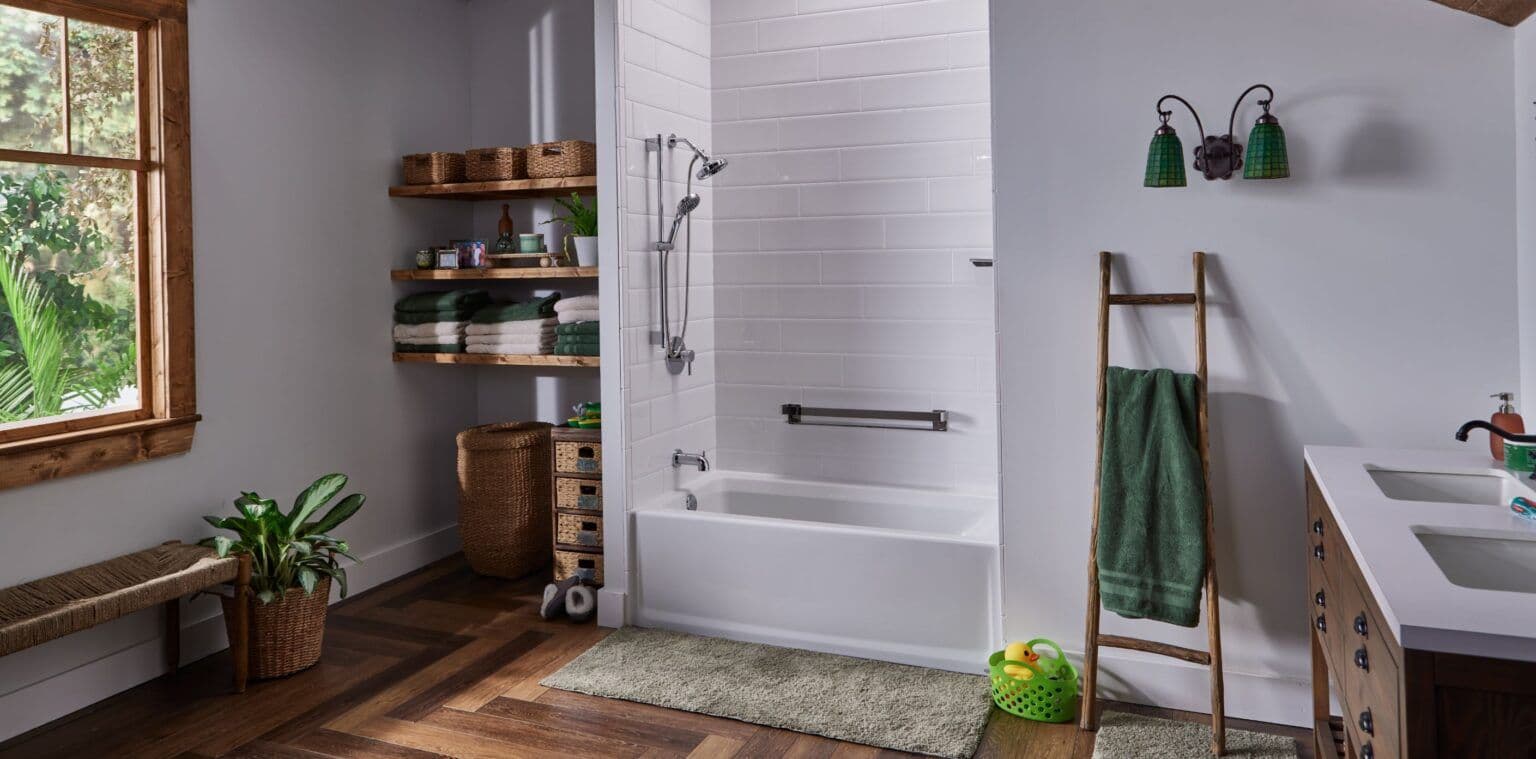
Benefits of Acrylic Tile Showers
Low Maintenance
One of the primary advantages of acrylic or simulated tile for showers is their low maintenance. Unlike traditional grouted tile, acrylic panels have minimal seams and no grout lines, making them easier to clean and less susceptible to mold and mildew growth. A simple wipe-down with a non-abrasive cleaner is usually sufficient to keep them looking pristine.
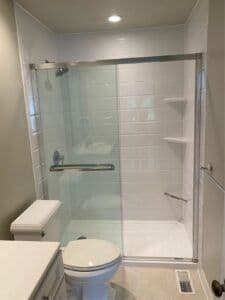
Quick Installation
Simulated tile panels are often pre-fabricated and can be installed much faster than traditional tiles. This can significantly reduce labor costs and the time your bathroom is out of commission during the renovation. This is an important factor to consider if you only have one shower in your home.
Durability
Simulated tile is known for its durability. It’s resistant to chipping, cracking, and staining, making it a long-lasting choice for your shower. This durability is particularly advantageous in high-traffic bathrooms that get lots of use and abuse.
Design Versatility
Simulated tile comes in a variety of colors, patterns, and finishes, allowing you to customize your shower to match your design preferences. Whether you prefer a modern, sleek look or a more traditional style, simulated tile may be the perfect fit.
Negatives of Acrylic Tile Showers
Limited Aesthetic Appeal
While simulated tile offers design versatility, it may not have the same aesthetic appeal as traditional ceramic or porcelain tile. Some homeowners prefer the timeless and luxurious look of natural stone or handmade ceramic tiles. If you are dead set on a traditional tile look, simulated tile may not cut it for you.

Prone to Scratches
Although simulated tile is durable, it is susceptible to surface scratches and damage from abrasive cleaners or sharp objects. You generally won’t need to scrub as hard as you do with traditional tiles but care should be taken to avoid these to maintain the shower’s appearance.
Potentially Less Value
In the real estate market, homes with traditional tile showers may have a higher perceived value compared to those with simulated tile. If you plan to sell your home in the future, this is something to consider.
How Long Do Acrylic Tile Showers Last?
The lifespan of simulated tile showers can vary depending on factors such as maintenance, usage, and the quality of the materials used. Generally, a well-maintained acrylic tile shower can last anywhere from 10 to 20 years. Regular cleaning and proper care will help extend its longevity.
Acrylic Tile vs. Traditional Tile Showers
Installation Time
Simulated tile showers win in this department, taking significantly less time to install compared to traditional tile showers.

Cost
Simulated tile is often more cost-effective than purchasing high-quality ceramic or porcelain tiles, but the cost may vary depending on your location and the specific materials chosen.
Aesthetic Appeal
Traditional tiles offer a classic, elegant look that appeals to many homeowners, while simulated tiles may be seen as a more functional and budget-friendly option that won’t crack, fade, or look grimy.
Waterproofness
Acrylic is non-porous so you won’t have to worry about developing leaks through cracks or deteriorating grout. Simulated tiles will be completely sealed so things like mold, mildew, and stains won’t be a concern.
Maintenance
Simulated tile requires less maintenance due to its smooth surface and minimal grout lines, whereas traditional tiles may need more frequent cleaning and sealing to keep their shine.
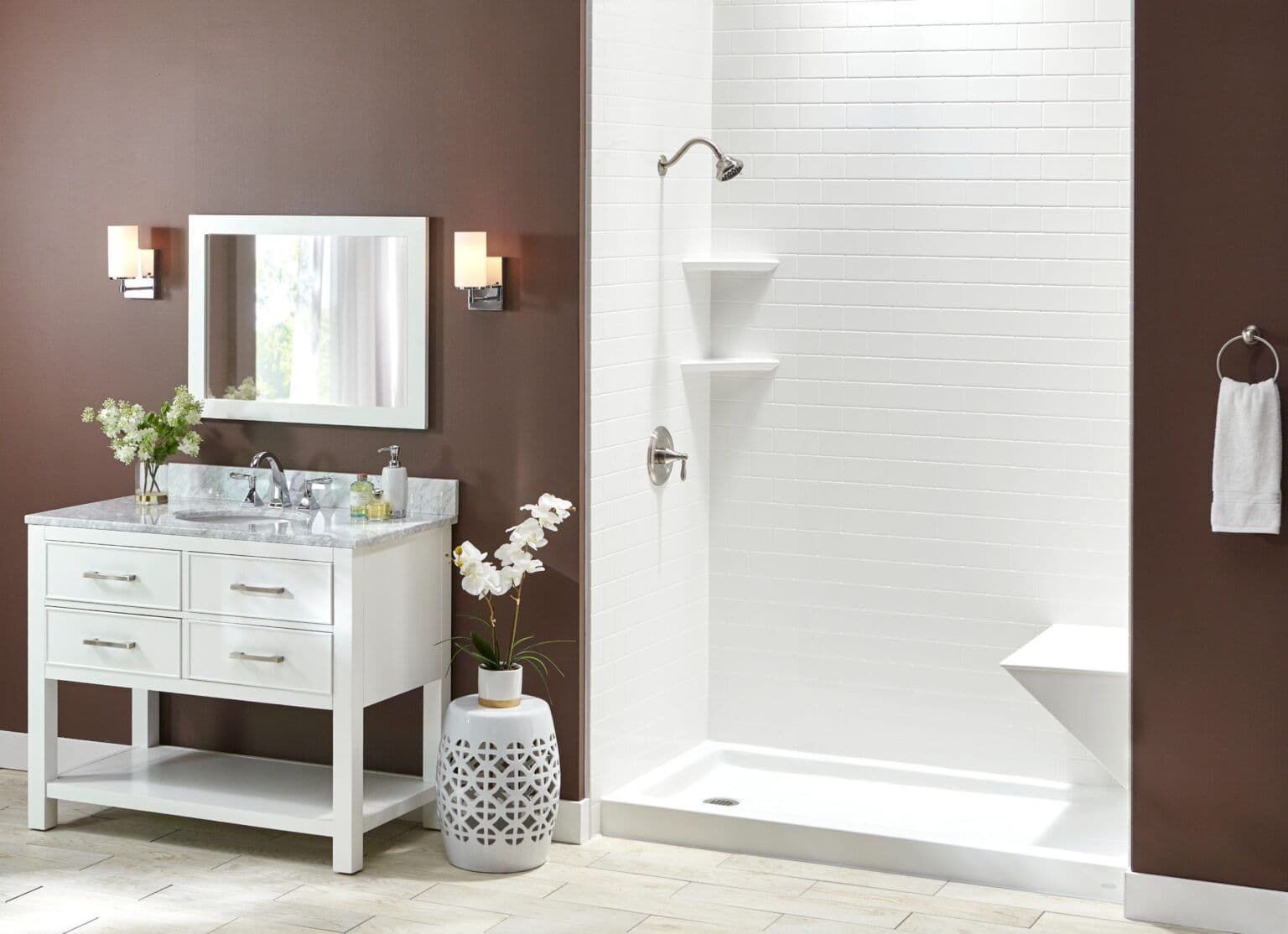
Which Is Best For You?
In conclusion, simulated tile showers offer several benefits such as low maintenance, quick installation, durability, and design versatility. However, they may lack the aesthetic appeal of traditional tile options and could potentially have a lower resale value.
The choice between simulated and normal tile ultimately depends on your budget, design preferences, and long-term plans for your bathroom. Careful consideration of these factors will help you make the right choice for your shower renovation project and leave you with a beautiful shower that you’ll be sure to love!
4th Of July Sale
FREE Installation
Financing As Low As $125/mo
+No Interest, No Payments For 12 Months!
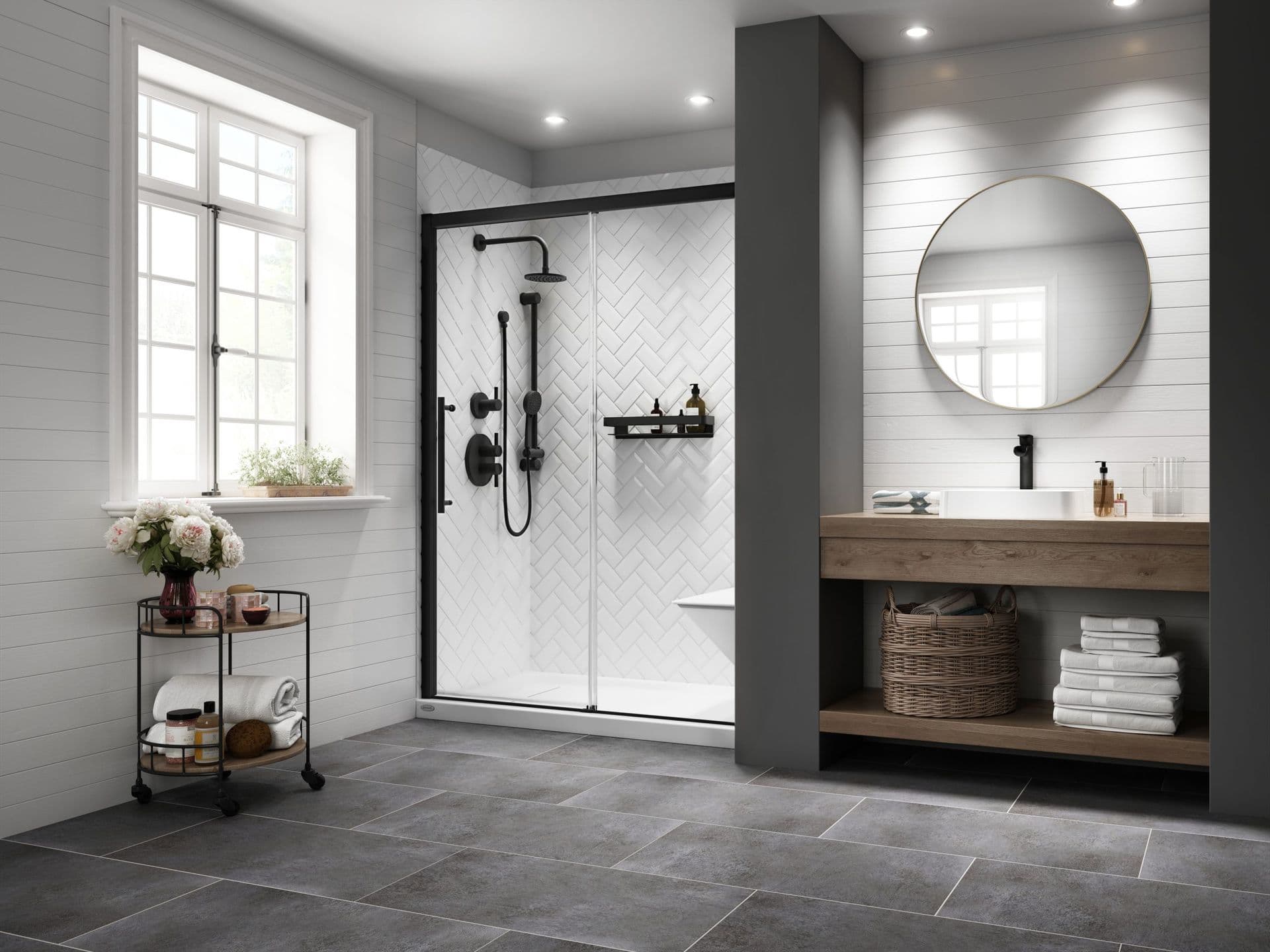
Get Inspired With These Gorgeous New Bathrooms
Featured Reviews
We just love our new bath/shower from BathWorks of Mi! We chose the Premium Collection, because of its classic look that blends into our bathroom so beautifully
Amazing transformation. Justin and his right hand man were here on time and worked tirelessly to get the job done by 5 pm. They were nice, professional and informative. I highly recommend.
Tex and J. were wonderful to work with. Very friendly and polite. Did an excellent job...looks beautiful. Cannot wait to use it. What a difference this is going to make in my life!
Contact Us
